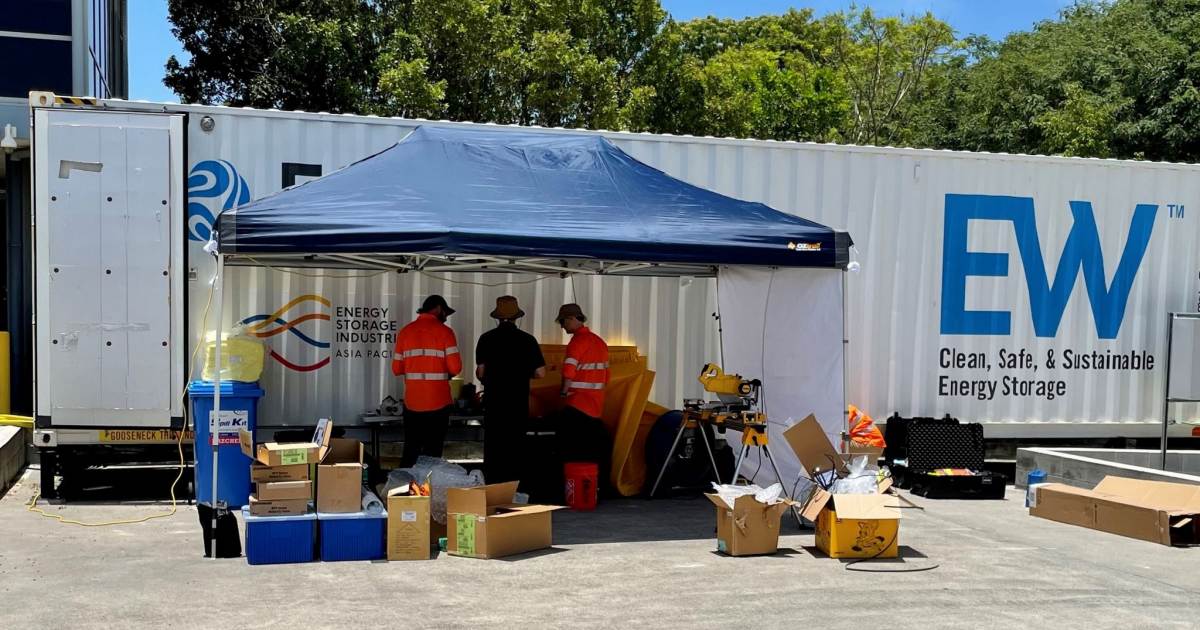
Queensland’s National Battery Testing Centre (NBTC) has a new energy storage system to tinker with – what’s said to be Australia’s first large-scale iron flow battery.
In a nutshell, a flow battery features two tanks of liquid electrolyte comprised of iron, salt and water. The electrolyte, positively charged in one tank and negatively in the other, is kept separated by a membrane. Ion exchange occurs across this membrane, which generates chemical and electrical energy. Energy is released or stored through the continuous circulation of the electrolyte solutions.
Installation and commissioning of the battery provided by Energy Storage Industries ( ESI) Asia Pacific has begun, and once operational will demonstrate the potential of iron-flow storage technology to capture surplus energy and return it to the grid at peak times.
There appears to be significant local interest in ESI’s tech.
“We are working with a range of exciting offtake partners who are analysing the local testing process and running specific scenarios to clarify how they can best integrate the storage into their operations,” said ESI Asia Pacific yesterday.
Maryborough To Host Iron Flow Battery Manufacturing
While this battery was manufactured by ESS, Inc. in the USA, ESI has a $70 million iron flow battery manufacturing plant under construction in Maryborough that at this point the company expects to be up and running in late 2024. At the Maryborough site, iron-flow batteries for wholesale electricity generators, energy retailers and commercial and industrial customers will be assembled.
Beyond initial commencement of operations at the facility, ESI plans to expand and is aiming to deliver up to 400 megawatts of energy storage each year. ESI Asia Pacific says it will have 500 employees and contractors working at its facilities throughout regional Queensland when fully operational,
The battery undergoing testing at NBTC is just one of the models that will be assembled in Maryborough. The specs of the battery system being tested weren’t mentioned, but ESI lists the following capabilities for its iron flow battery products:
- 6 – 14 Hours Energy Storage
- Modular design enabling 400KWh to 1GWh+ installation
- 20,000+ cycling capability with no degradation
- 25+ year service life
- 5°C to 50°C operating range
- Non-toxic, non-flammable, 100% recyclable
As well as servicing local customers, ESI plans to eventually export its renewable energy storage solutions elsewhere in the Asia Pacific.
Electricity generator, industrial and commercial applications aside, smaller flow batteries have some potential for home energy storage.
There was a flow battery available for residential applications in Australia a while ago called the ZCell, but it is no longer being produced. Another product in the pipeline is a (comparatively huge) grid-connect residential flow battery from VSUN; but we haven’t heard anything about it for quite some time.
About The National Battery Testing Centre
The NBTC was established at Queensland University of Technology to test various types of battery systems in real-world conditions for Australian applications. Situated in the Brisbane suburb of Banyo, the NBTC received a $15 million Queensland Government investment back in June this year to scale up its operations.
The Banyo Pilot Plant Precinct, which is home to the NBTC, is the first QUT research facility to be powered by renewable energy.

 RSS - Posts
RSS - Posts



Speak Your Mind